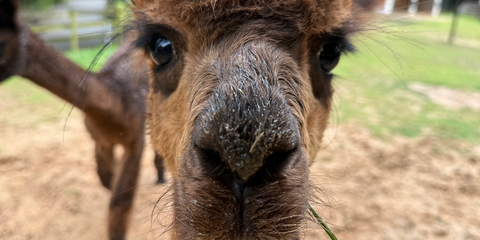Binturongs, also known as bearcats, are found in South and Southeast Asia. They have shaggy, dark brown coats, sharp teeth and claws. They spend most of their time climbing and perching in trees.
Physical Description
They look like mask-less raccoons with tufty whiskers and eyebrows. They have low, wide, muscular bodies. They have shaggy, dark brown coats that shade to black on their snouts, limbs and tails. They walk with their feet flat, like bears and humans. A leathery patch on the tip of their strong tail gives them extra traction while climbing. Binturongs are one of two carnivorous species with a prehensile tail (the other is the kinkajou).
Binturongs are also called bearcats but are not closely related to bears or cats. They are in the family Viverridae with other small cat-like mammals, including civets and fossas. They are the only members of the genus Arctic.
Size
Native Habitat
Lifespan
Communication
Food/Eating Habits
Sleep Habits
Social Structure
Reproduction and Development
Female binturongs are among the species known to exhibit embryonic diapause (or delayed implantation). This means they breed when a mate is available, but the fertilized egg does not attach to the uterine wall until days or months later (making them truly pregnant) when conditions are most favorable. Once a binturong does become pregnant, gestation lasts 90 to 92 days.
Binturongs usually give birth to two babies, called binlets, at a time. They are born with their eyes closed, and they cling to their mother’s fur for the first few days of their lives. They stay with their mother until they are independent — sometimes even longer.
Conservation Efforts
Help this Species
- Reduce, reuse and recycle — in that order! Cut back on single-use goods, and find creative ways to reuse products at the end of their life cycle. Choose recycling over trash when possible.
- Practice ecotourism by being an advocate for the environment when you’re on vacation. During your travels, support, visit or volunteer with organizations that protect wildlife. Shop smart too! Avoid buying products made from animals, which could support poaching and the illegal wildlife trade.
- Share the story of this animal with others. Simply raising awareness about this species can contribute to its overall protection.
- Are you a student? Did you love what you learned about this animal? Make it the topic of your next school project, or start a conservation club at your school. You'll learn even more and share the importance of saving species with classmates and teachers, too.
Meet the Animals
Hank is the Zoo’s male binturong. He was born June 2, 2011, at the Cincinnati Zoo and Botanical Garden in Ohio. He came to the Zoo in Jan. 2022, from the Brookfield Zoo in Illinois at the recommendation from the Association of Zoos and Aquariums’ Species Survival Plan (SSP).
Hank is very friendly and enjoys investigating new smells. On hot days, he can often be found resting on a high perch while catching a cool breeze. Hank has started to develop some age-related issues, like arthritis. Animal care teams are monitoring Hank’s health and treat his arthritis with laser therapy twice a week.
Lola is the Zoo’s female binturong. She was born Feb. 8, 2013, at Bioparc Fuengirola in Spain. She came to the Zoo in in Jan. 2022, along with Hank. Both arrived from the Brookfield Zoo in Illinois as part of an SSP breeding recommendation.
On hot days, Lola tends to lay near the water mister to stay cool.
Want to tell them apart? Lola is the larger of the two binturongs. Hank has a smoother, sleeker coat, while Lola has a fluffy coat that creates a halo of hair behind her head.



